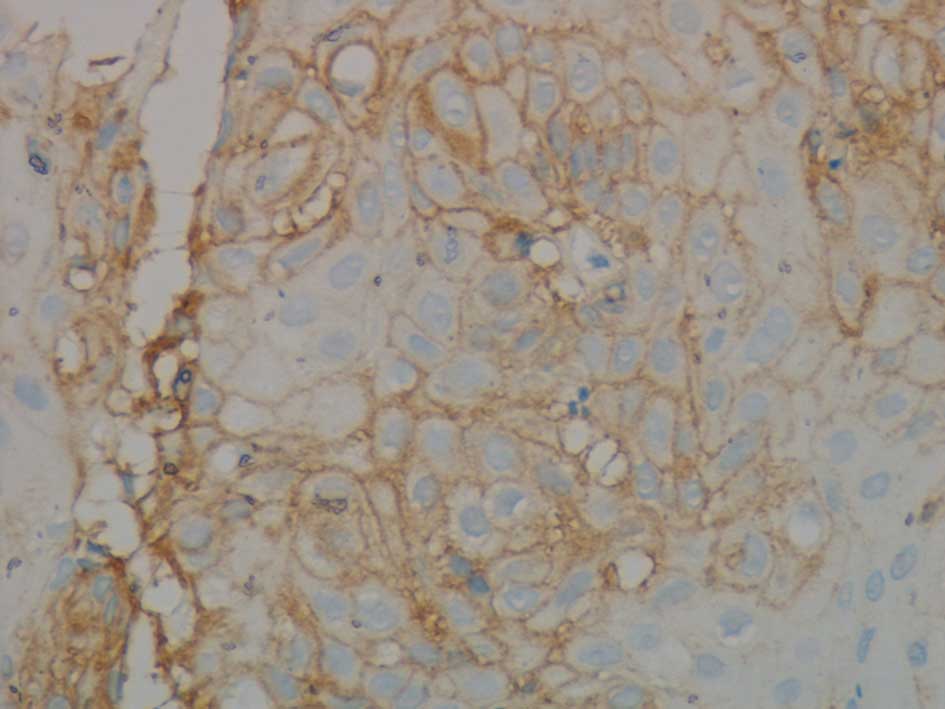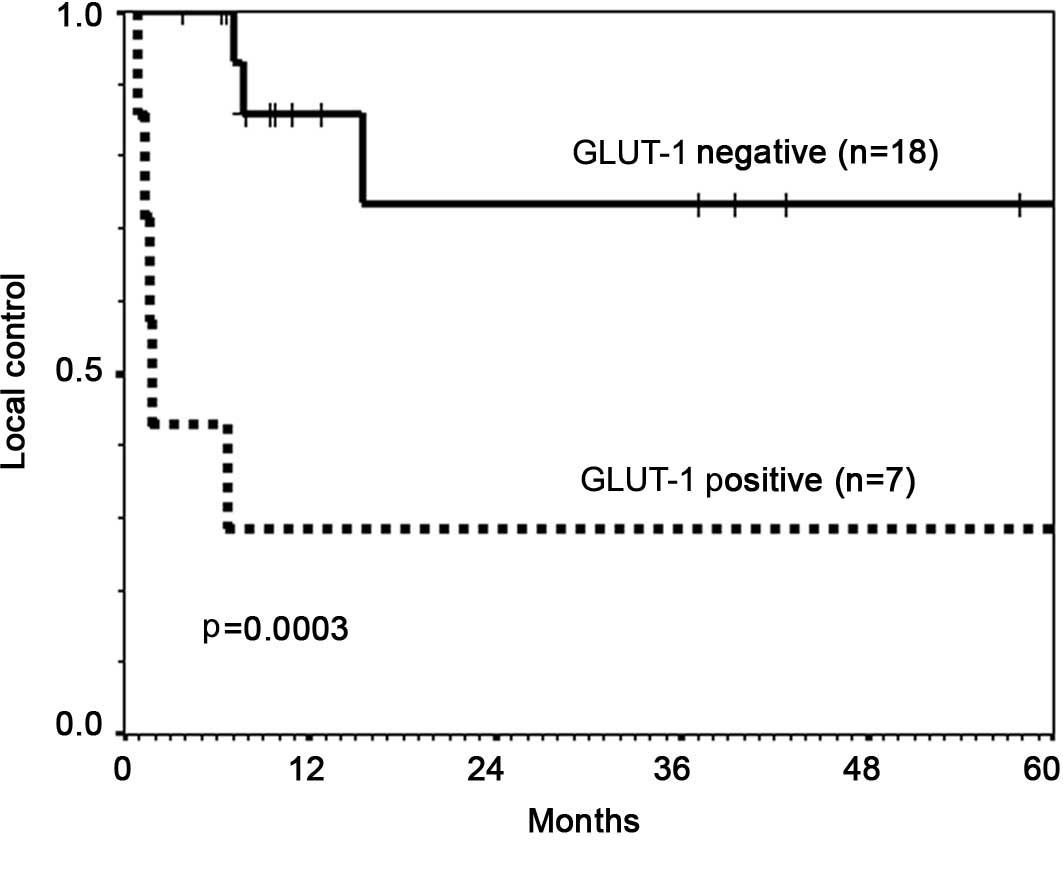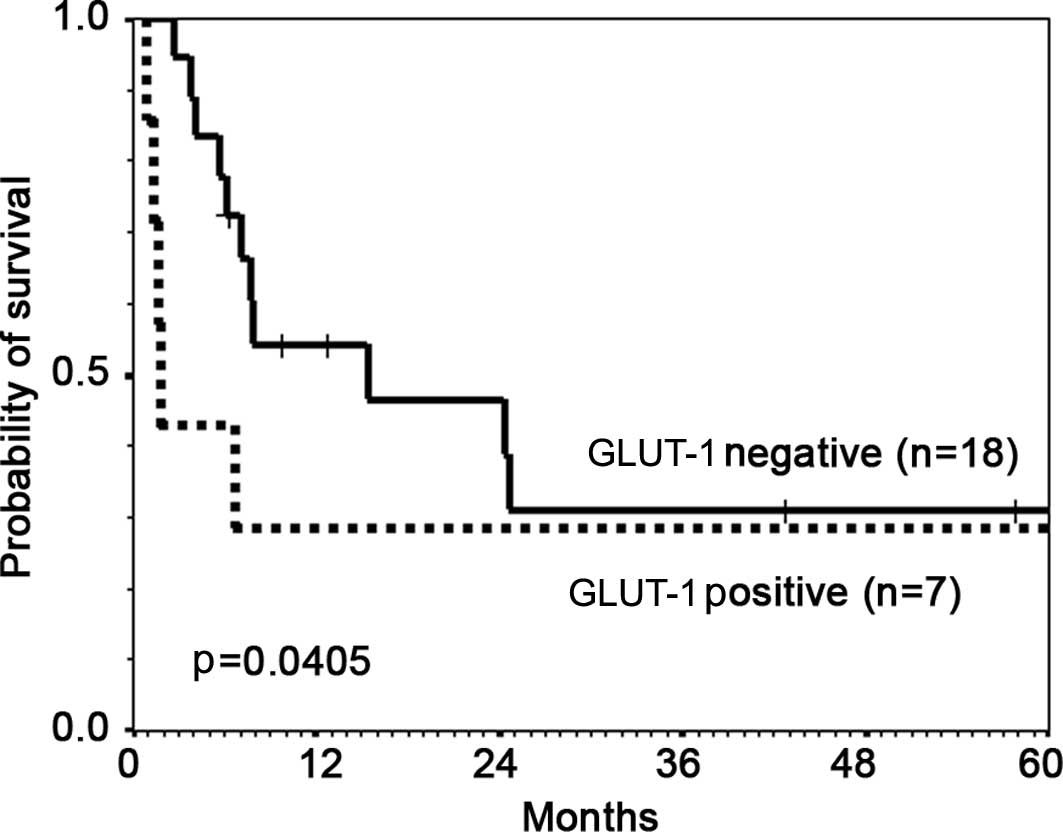|
1
|
Roth JA, Putnum JB Jr, Rich TA and
Forastiere AA: Cancer of the esophagus. Cancer: Principles And
Practice Of Oncology. 5th edition. Devita VT Jr, Hellman S and
Rosenberg SA: Lippincott-Raven; PA: pp. 980–1021. 1997
|
|
2
|
Earlam R and Cunha-Melo JR: Oesophageal
squamous cell carcinoma: I. A critical review of surgery. Br J
Surg. 67:381–390. 1980. View Article : Google Scholar : PubMed/NCBI
|
|
3
|
Earlam R and Cunha-Melo JR: Oesophogeal
squamous cell carcinoms: II. A critical view of radiotherapy. Br J
Surg. 67:457–461. 1980. View Article : Google Scholar : PubMed/NCBI
|
|
4
|
Cooper JS, Guo MD, Herskovic A, et al:
Chemoradiotherapy of locally advanced esophageal cancer: long-term
follow-up of a prospective randomized trial (RTOG 85-01). Radiation
Therapy Oncology Group. JAMA. 281:1623–1627. 1999. View Article : Google Scholar : PubMed/NCBI
|
|
5
|
Minsky BD, Pajak TF, Ginsberg RJ, et al:
INT 0123 (Radiation Therapy Oncology Group 94-05) phase III trial
of combined-modality therapy for esophageal cancer: high-dose
versus standard-dose radiation therapy. J Clin Oncol. 20:1167–1174.
2002. View Article : Google Scholar : PubMed/NCBI
|
|
6
|
Behrooz A and Ismail-Beigi F: Dual control
of glut1 glucose transporter gene expression by hypoxia and by
inhibition of oxidative phosphorylation. J Biol Chem.
272:5555–5562. 1997. View Article : Google Scholar : PubMed/NCBI
|
|
7
|
Lin Z, Weinberg JM, Malhotra R, Merritt
SE, Holzman LB and Brosius FC III: GLUT-1 reduces hypoxia-induced
apoptosis and JNK pathway activation. Am J Physiol Endocrinol
Metab. 278:958–966. 2000.PubMed/NCBI
|
|
8
|
Pessin JE and Bell GI: Mammalian
facilitative glucose transporter family: structure and molecular
regulation. Annu Rev Physiol. 54:911–930. 1992. View Article : Google Scholar : PubMed/NCBI
|
|
9
|
Airley R, Loncaster J, Davidson S, Bromley
M, Roberts S, Patterson A, Hunter R, Stratford I and West C:
Glucose transporter glut-1 expression correlates with tumor hypoxia
and predicts metastasis-free survival in advanced carcinoma of the
cervix. Clin Cancer Res. 7:928–934. 2001.PubMed/NCBI
|
|
10
|
Airley RE, Loncaster J, Raleigh JA, et al:
GLUT-1 and CAIX as intrinsic markers of hypoxia in carcinoma of the
cervix: relationship to pimonidazole binding. Int J Cancer.
104:85–91. 2003. View Article : Google Scholar : PubMed/NCBI
|
|
11
|
Brown RS and Wahl RL: Overexpression of
Glut-1 glucose transporter in human breast cancer. Cancer.
72:2979–2985. 1993. View Article : Google Scholar : PubMed/NCBI
|
|
12
|
Haber RS, Weiser RL, Pritsker A, Reder I
and Burstein DE: Glut-1 glucose transporter in benign and malignant
thyroid nodules. Thyroid. 7:363–367. 1997. View Article : Google Scholar : PubMed/NCBI
|
|
13
|
Mellanen P, Minn H, Grenman R and Harkonen
P: Expression of glucose transporters in head and neck tumors. Int
J Cancer. 56:622–629. 1994. View Article : Google Scholar : PubMed/NCBI
|
|
14
|
Chang S, Lee S, Lee C, Kim JI and Kim Y:
Expression of the human erythrocyte glucose transporter in
transitional cell carcinoma of the bladder. Urology. 55:448–452.
2000. View Article : Google Scholar : PubMed/NCBI
|
|
15
|
Kurata T, Oguri T, Isobe T, Ishioka S and
Yamakido M: Differential expression of facilitative glucose
transporter (GLUT) genes in primary lung cancers and their liver
metastases. Jpn J Cancer Res. 90:1238–1243. 1999. View Article : Google Scholar : PubMed/NCBI
|
|
16
|
Haber RS, Rathan A, Weiser KR, et al:
GLUT-1 glucose transporter expression in colorectal carcinoma: a
marker for poor prognosis. Cancer. 83:34–40. 1998. View Article : Google Scholar : PubMed/NCBI
|
|
17
|
Cartiana G, Fagotti G, Megathaes A, et al:
Glut-1 expression in ovarian carcinoma: association with survival
and response to chemotherapy. Cancer. 92:1144–1150. 2001.
View Article : Google Scholar : PubMed/NCBI
|
|
18
|
Younes M, Brown RW, Stephenson M, Gondo M
and Cagle PT: Overexpression of Glut1 and Glut3 in stage 1 nonsmall
cell lung carcinoma is associated with poor survival. Cancer.
80:1046–1051. 1997. View Article : Google Scholar : PubMed/NCBI
|
|
19
|
Tohma T, Okazumi S, Makino H, et al:
Overexpression of glucose transporter 1 in esophageal squamous cell
carcinomas: a marker for poor prognosis. Dis Esophagus. 18:185–189.
2005. View Article : Google Scholar : PubMed/NCBI
|
|
20
|
Kato H, Takita J, Miyazaki T, et al:
Glut-1 glucose transporter expression in esophageal squamous cell
carcinoma is associated with tumor aggressiveness. Anticancer Res.
22:2635–2639. 2002.PubMed/NCBI
|
|
21
|
Japanese Society for Esophageal Disease.
Guide Lines For The Clinical And Pathologic Studies On Carcinoma Of
The Esophagus. 9th edition. Kanehara Shuppan; Tokyo: pp. 59–79.
1999
|
|
22
|
Kaplan EL and Meier P: Nonparametric
estimation from incomplete observations. J Am Stat Assoc.
53:457–481. 1958. View Article : Google Scholar
|
|
23
|
Gehan E: A generalized Wilcoxon test for
comparing arbitrarily single-censored samples. Biometrica.
52:203–224. 1965. View Article : Google Scholar : PubMed/NCBI
|
|
24
|
Cox DR: Regression models and life tables.
J R Stat Soc. 34:187–220. 1972.
|
|
25
|
Kawamura T, Kusakabe T, Sugino T, et al:
Expression of glucose transporter-1 in human gastric carcinoma:
association with tumor aggressiveness, metastasis, and patient
survival. Cancer. 92:634–641. 2001. View Article : Google Scholar : PubMed/NCBI
|
|
26
|
Brophy S, Sheehan KM, McNamara DA, Deasy
J, Bouchier-Hayes DJ and Kay EW: GLUT-1 expression and response to
chemoradiotherapy in rectal cancer. Int J Cancer. 125:2778–2782.
2009. View Article : Google Scholar : PubMed/NCBI
|
|
27
|
Hockel M, Schlenger K, Aral B, Mitze M,
Schaffer U and Vaupel P: Association between tumor hypoxia and
malignant progression in advanced cancer of the uterine cervix.
Cancer Res. 56:4509–4515. 1996.PubMed/NCBI
|
|
28
|
Airley RE, Phillips RM, Evans AE, et al:
Hypoxia-regulated glucose transporter Glut-1 may influence
chemosensitivity to some alkylating agents: Results of EORTC (First
Translational Award) study of the relevance of tumour hypoxia to
the outcome of chemotherapy in human tumour-derived xenografts. Int
J Oncol. 26:1477–1484. 2005.
|
|
29
|
Gray LH, Conger AD, Ebert M, Hornsey S and
Scott OC: The concentration of oxygen dissolved in tissues at the
time of irradiation as a factor in radiotherapy. Br J Radiol.
26:638–648. 1953. View Article : Google Scholar : PubMed/NCBI
|
|
30
|
Shetty M, Loeb JN, Vikstrom K and
Ismail-Beigi F: Rapid activation of GLUT-1 glucose transporter
following inhibition of oxidative phosphorylation in clone 9 cells.
J Biol Chem. 268:17225–17232. 1993.PubMed/NCBI
|
|
31
|
Warburg O: On the origin of cancer cells.
Science. 123:309–314. 1956. View Article : Google Scholar : PubMed/NCBI
|
|
32
|
Ogawa T, Inugami A, Hatazawa J, et al:
Clinical positron emission tomography for brain tumors: comparison
of fludeoxyglucose F 18 and L-methyl-(11)C-methionine. Am J
Neuroradiol. 17:345–353. 1996.PubMed/NCBI
|
|
33
|
Adams S, Baum R, Schumm-Drager P, Usadel K
and Hor G: Limited value of fluorine-18 fluorodeoxyglucose positron
emission tomography for the imaging of neuroendocrine tumors. Eur J
Nucl Med. 25:79–83. 1998. View Article : Google Scholar : PubMed/NCBI
|
|
34
|
Taylor MD, Smith PW, Brix WK, et al:
Correlations between selected tumor markers and fluorodeoxyglucose
maximal standardized uptake values in esophageal cancer. Eur J
Cardiothorac Surg. 35:699–705. 2009. View Article : Google Scholar
|
|
35
|
Westerterp M, Sloof GW, Hoekstra OS, et
al: 18FDG uptake in oesophageal adenocarcinoma: linking biology and
outcome. J Cancer Res Clin Oncol. 134:227–236. 2008. View Article : Google Scholar : PubMed/NCBI
|
|
36
|
Kato H, Takita J, Miyazaki T, et al:
Correlation of 18-F- fluorodeoxyglucose (FDG) accumulation with
glucose transporter (Glut-1) expression in esophageal squamous cell
carcinoma. Anticancer Res. 23:3263–3272. 2003.PubMed/NCBI
|

















